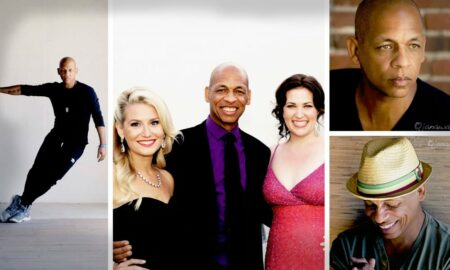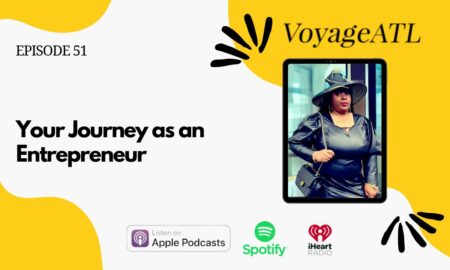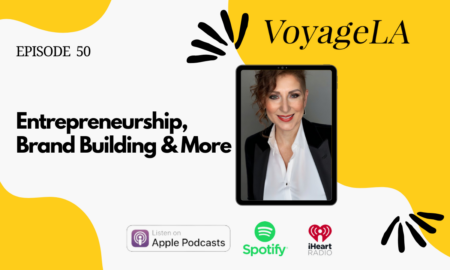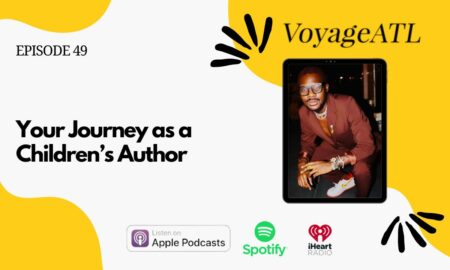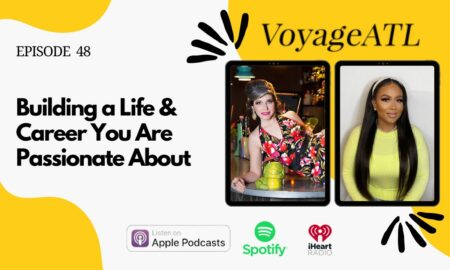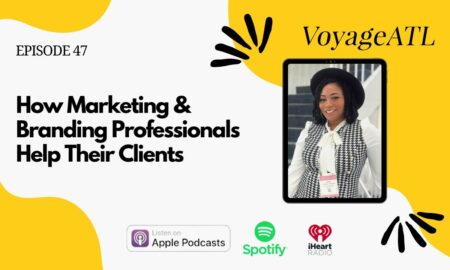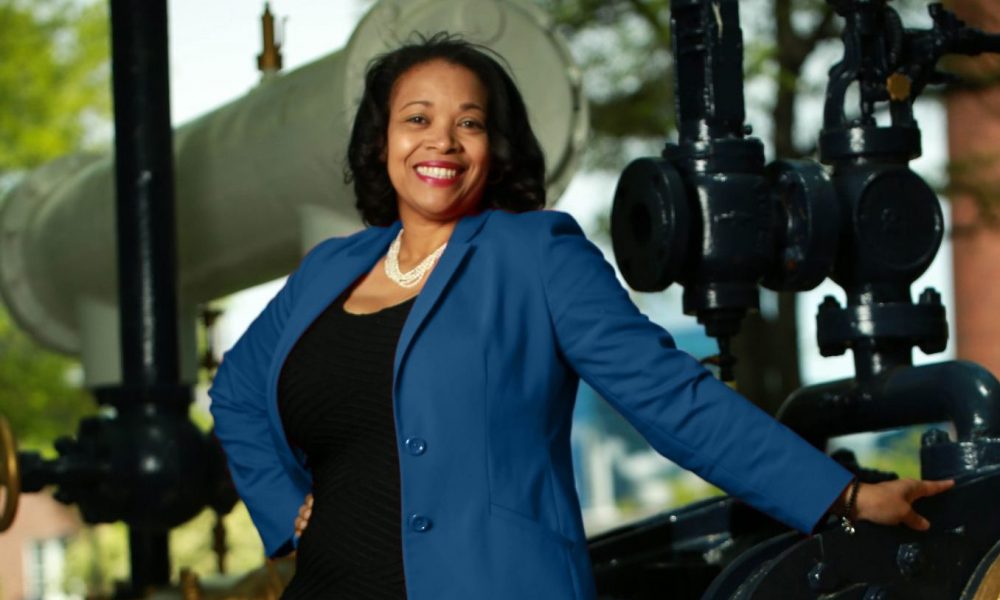

Today we’d like to introduce you to Dr. Sybrina Y. Atwaters.
Dr. Sybrina, let’s start with your story. We’d love to hear how you got started and how the journey has been so far.
Some of your readers may be familiar with the movie Hidden Figures. I can honestly say since matriculating at Georgia Institute of Technology (Georgia Tech), I have been surrounded by hidden figures. I’ve been surrounded by people that grind everyday, doing astonishing work without much acknowledgment, knowing that that they are contributing towards something greater than themselves. The idea that what you do, how you live, is representative of a community that is larger than you are ethos found in recent movies like Hidden Figures and Black Panther. It is also a philosophy that was instilled in me at an early age through family, through school, through church, and community.
At the same time, being Black in STEM you are often made to feel like the exception coming from the small inner city communities where I grew up. I was born and raised in Atlanta. I grew up in Kirkwood, non-gentrified Kirkwood when it was still the hood. I went to school when gangs such as Down by Law and 5 % Nation were vibrant and eight projects filled inner-city Atlanta. I went to Murphy High School which became Alonzo A. Crim High School my last year of high school. After merging Murphy High School, Bass High School, and East Atlanta High School, Atlanta Public School district decided to name the school after the late Dr. Alonzo A. Crim (who was still alive at the time). Dr. Crim literally funded my 1st quarter tuition out of his pocket, so that I could attend Georgia Tech (I’ll get back to that). I can count on one hand the number of blacks from Crim that attended Georgia Tech since 1980, and we were less than 15 minutes away.
I grew up in a single-parent home. My parents divorced when I was 11. My father was an alcoholic and abusive (until he became sober and a Christian). My parents were forced to marry in high school and neither ever finished high school. Yet both are some of the most intelligent and creative people I know. I loved education. I loved math. I was a school “favorite:” on the debate team, a foreign exchange student, dance team, editor of the yearbook, “most likely to succeed” and the first salutatorian of A.A. Crim. I received full rides to several colleges as an electrical engineering (EE) major. One day the NSBE chapter of Georgia Tech came and spoke to our honors pre-calculus class. I had never heard of Georgia Tech. It wasn’t a place my counselors advocated that we attend. They honestly thought we could not make it at Tech.
I remember my high school counselor telling me that as I sat in her office discussing my college decisions. I walked out of her office. I did not return to class as the slip in my hand dictated I should. I went to the yearbook room and I called my mother. I cried. I tried to explain what had occurred. When I got home, I replayed the whole story to my mother. My mother, survivor of two abusive marriages, mother of three, recently laid off with very limited income, looked at me and said, “Do you want to go to Georgia Tech?” I said “yes ma’am. It’s the best program for EE and it is down the street.” She said, “God has never failed us.” My mother has always been a beacon of light; strong, resilient and unwaivered by circumstances or obstacles. I don’t quite know what my mother did. All I know is that I was called into the principal’s office one day and told that Dr. Alonzo A. Crim wanted to meet me. I had dinner in some fancy restaurant with Mr. Leophart and Dr. Crim that night. Dr. Crim promised me that if I got accepted into Georgia Tech they would figure out how to pay for me to go – at least my first year- even if he had to pay out of his pocket. I was accepted and he kept his word.
So like many others my entry into STEM at Ga Tech was overwhelming. Both academically and culturally. However, moving into the engineering world was the “change of tide” I needed in my life. I met the Gary Mays, Galvin Samms, Andrea Prices, Sabrina Quarles, Raymond Harts, Archie Lekes, Dorothy Yancy’s, Augustine Esobogues of the world. Black hidden Figures that blew my mind, but that modeled what I could be. Doing the work, exceptional at what they did, but not satisfied with self-achievement, their grind included creating spaces for others. Going the extra mile was common for them. That mindset was passed along to this new 90’s generation at GT and supported relentlessly by amazing Black staff.
1989-1994 era was not only a change of tide for GT Black students, it was also a change of tide for technology. The cell phone and wireless technology was emerging. The internet was becoming more of a mass commodity. It was a great time to be an electrical engineer with a focus on RF (radio frequency) design. I secured an internship with Motorola and ultimately a job as a RF design engineer in cellular/wireless with Sprint. Within a year, I gained a position back in Atlanta with Bellsouth Mobility/ AT&T. Not only did I become a senior design engineer moving up three ranks in 5 years.
But I started moving towards my passions of knowledge production and development. While completing my assigned tasks as an engineer, it was important that I also found opportunities to grow and develop. I took over 25 technical and professional development courses during my engineering career. The first 16 were in the first three years. I instituted an intern program and brought in some of the first African American interns. They were the most qualified…go figure. But yes, I did have to search between Georgia Tech, UGA and the Atlanta University System to find them.
I also persuaded my director and VP to allow me to work part of the day with HR in developing technical curriculum and part of the day in doing my design job. Oh and pay for me to go back to school. Crazy, right? But they did it. I designed some of the first digital GSM and TDMA cell sites in Atlanta. Two of my design towers still line the I-75/I-85 corridor. Right here at GT I was brought in to meet with a panel in an effort to secure a major design bid that was being halted by a physics professor at GT with a pacemaker. He was arguing that the impact of the RF emissions would be too great of risks on campus. I presented the case to convince the physics department to allow us to put a wireless tower on top of the building. I felt like Katherine Johnson walking in that room with EE and physicists shortly after being a struggling undergraduate student at Georgia Tech. Now I was using their own formulas with my new found knowledge to convince them that we should proceed; while my white male manager and co-workers relinquished the floor for me to make the pitch. The scene in the movie happens daily for black women in STEM. Daily, still in 2019! You have to take the initiative, go the extra mile, be ready to seize opportunities when they arise. They will arise.
In 2007, I made one of the most difficult decisions in my life. I had a series of dreams in which I am convinced God guided me to walk away from my successful engineering career and pursue a different path. I realized that if I really wanted to make an impact, I would have to be willing and prepared to enter in rooms that I was both unfamiliar and uncomfortable with. I would have to be more intentional about creating pathways for others. I still believe scientists, engineers, and higher education are the “hidden hands” that design the fabric of our lives. Consequently, I view them as some of the greatest influencers of how we live. They guide the mechanisms through which we communicate, construct, build, produce, “be”, and thus they influence our world views.
I decided to return to academia I pursued my master’s of theological studies degree from Candler School of Theology at Emory University. My faith and my church community had been so intricate to my life, liberation, and success that I thought if I could combine the two worlds of religion and technology I could invent/create an innovative mechanism that would allow so many others of the inner city community to move beyond surviving to thriving. Ultimately my pursuits led me back to Georgia Tech and I applied and was accepted into the PhD program in the school of History and Sociology of Technology and Science.
You would think as I shifted from engineering to academia in a STEM environment it would be more welcoming; especially returning to Georgia Tech as a graduate student, 18 years after I first matriculated as an undergraduate student. It was not. There were days I literally walked over to OMED and sat in the reception area just to see Black students walk in and out; before returning to rooms with faculty and fellow grad students, as the only, and those that didn’t mind eluding to how they felt about me being there. But I had a champion in the midst. I will return to that later. I finished with a 4.0 GPA, I published, I taught, I led research teams, I consulted.
Ultimately I would complete my doctoral studies becoming only 1 of 2 African American women to obtain a PhD through the school of History and Sociology at Georgia Tech; and the only one in Sociology of Technology and Science. I must admit that one of the biggest reasons I finished my doctoral degree was because of Dr. Willie Pearson, Jr. he was my dissertation advisor, but he was also my mentor, my sponsor, and my champion. So how did I get to my current position, after all of that. During graduate studies, I was fortunate to return to the office that had been so significant to my (and so many other Black students ) undergraduate experience. I was recruited by Cynthia Moore and became a graduate research assistant for the new African American Male Initiative, working with Andre Dickens and S. Gordon Moore Jr. It was this role that thrust me back into diversity and inclusion work, particularly within STEM fields. Upon graduating, I worked with Gifted Education Foundation and did some research consulting.
About one year later, the assistant director of OMED, who I worked with as a graduate research assistant, decided to leave Georgia Tech and pursue his dual career as a STEM leader/educator and elected official. One of my best friends, Errika Moore, gave me a call and told me that the position was available and encouraged me to apply. I did. After a series of interviews, I was selected from the pool of candidates.
Has it been a smooth road?
There have been many struggles along the way to where I am now! Throughout my childhood, there were moments of struggle associated with poverty, low-income environments, limited underresourced communities and schools, inner-city violence, and structural oppression. For me, however, all of these issues were overshadowed by love, tenacity, and faith, which were abundant in my family, especially from my mother. Further, as I mentioned earlier, my undergraduate college experience was a constant struggle for me academically. The electrical engineering program at Georgia Tech was no joke and I was scholastically underprepared. Yet, the Black community during that time, OMED, my sorority sisters of the illustrious Xi Alpha chapter of Delta Sigma Theta Sorority, my girls (fondly referred to as GlennMafia), and my church community where powerful sources that supported me through overcoming every obstacle that I encountered.
As one might imagine, in 2007 when I decided to leave an almost 6 figure income to return to graduate school, as a single mother, relying on my savings and two fellowships that equated to 1/3 of what I was previously making, struggle was constant. Add to that the academic rigor and quite honestly some of the social-cultural challenges of racism still prevalent in the “ivory tower”, caused me to gain a new understanding (and a few skills) for persevering through mental, physical, and emotional exhaustion. Yet, it was the time period between 2014 and 2016 that almost broke me. I encountered a series of losses that shook me to my core. My niece, who was named after me and my other sister, had recently moved back to Atlanta. She left Atlanta a couple of years earlier to attend St. Paul College in Virginia on a full scholarship. She left a lot of hardship back in Virginia after her collegiate experience had not gone as anticipated. She was a giving, hardworking, intelligent, honors student growing up. She encountered more than her fair share of challenges and made some less than wise decisions. Yet, right when she was on her way to a new life, recently divorced, a week from starting a new job, acquiring a new home. At the young age of 23, her life was taken. Her car broke down. She decided to catch the bus to my old house, where her mother, brothers, and grandmother were because she had promised the kids pizza and ice cream. She was killed in a hit and run on Covington Highway. She left three young children behind. Her sudden death changed the dynamics of our family immensely. Her death was preceded by a near death experience of my daughter’s father and within six months, followed by the death of my uncle, my aunt, and my father.
Grief from one loss does something to the heart that can be immobilizing. Grieving a series of deaths, well, that almost broke me. I laid many nights in my floor and cried until I was too tired to do anything else but sleep. Then I would get up the next day and function long enough to make it back to the solitude of my home. It’s funny when I reflect on that time, before my niece’s death, my future plans included leaving Atlanta, pursuing a tenure-track professor position and climbing this new ladder of success I had chartered for myself. Her death, and the death of my father really, was the third “change of tide” in my life. The second was becoming the mother of the love of my life, Milan. After their deaths, I decided to be more intentional about purpose rather than status. I cared even less about accolades and positions. I only cared about making an impact, opening doors, advocacy, making sure every aspect of my life served a greater purpose. I was more committed than ever to diversity and inclusion work, to addressing injustices, and to love without fail. Although I knew that academia would still be my path, the pursuit of a tenure-track professor position outside of Atlanta was no longer an option. To be honest, it was unauthentic anyway. It was the path that I was trained to pursue. My heart though has always belonged to exactly what I am doing now.
What else should we know?
I am not highlighting my company, but I must say something about the office through which I believe I make the biggest impact on the Atlanta community. Therefore the views in this article about OMED and Georgia Tech are my own and do not represent Georgia Tech or speak on behalf of the institution.
Currently, I serve as the director of The Office of Minority Educational Development (OMED), a unit within Georgia Tech’s Institute Diversity, Equity and Inclusion’s Center for Student Diversity and Inclusion. I lead a team of diverse professionals, programs, initiatives, and research agendas aimed at enhancing the retention, performance advocacy, scholarship and holistic development of traditionally underrepresented students: African-American, Hispanic/Latino, Native American, and Multiracial. OMED was established in 1979 and was one of the first departments (not a student ran organization) established by Georgia Tech to address the needs and concerns of underrepresented students, as well as serve as a liaison to the administration.
For over 40 years, OMED has been serving the Georgia Tech and Atlanta community. In recent years the service of OMED has expanded rapidly. Between 2014-2019, OMED has had more than 13,000 participants in its programs and services. In the last five years, OMED has provided services and support for underrepresented minority students that range in breadth (covering all GT classifications and majors, academics, professional development, student services, recruitment, outreach, retention, and graduation) and depth (one-to-one mentoring, advising, deep-dive sessions at the intersection of race and gender through AAMI (African American Male Initiative) and WOCI (Women of Color Initiative), and health and wellness initiatives).
Challenge is OMED’s signature program. The first Challenge program was held in 1980 as a residential learning experience for incoming students. Challenge has run every year since its creation, except during the 1996 Olympic games. Last year Challenge welcomed the largest cohort in the history of the program, with 140 participants. OMED has civic partnerships with Atlanta Cares, Fearless Dialogues, Georgia Million Women Mentors and several Atlanta non-profit organizations. So, it is exceptional in that regard. It has been doing diversity and inclusion work in the trenches well before national D&I platforms were established and many STEM D&I organizations were conceived.
Simultaneously to leading OMED, I have maintained two parallel paths of research inquiry: sociology of technology (exploring knowledge production through virtual world technologies); and social inequality (examining patterns of inequality within science, engineering and higher education). I have worked collaboratively with scholars at the National Academies, the Fund for Theological Education, The Association for Theological Schools, and Iowa State University analyzing and conducting diversity and inclusion studies for underrepresented minorities in science, engineering, and theology. I have presented my work from both research areas at several professional conferences and I have been invited to participate in scholarly consultations. My work has been published by Springer International and John Hopkins University Press. For some, these two research paths may seem disconnected. Conversely, I have found them to have synergy around questions related to knowledge production, institutional power, and collective action. In other words, both research agendas ask two questions of knowledge-producing structures: what happens to people that migrate here? How do these structures impact and inform social inequities within the larger culture?
Is our city a good place to do what you do?
Absolutely, Atlanta provides every element necessary to cultivate and enhance diverse and inclusive institutions, organizations, and businesses.
Let’s touch on your thoughts about our city – what do you like the most and least?
I love Atlanta! I don’ t think I am bias as a native of the city. I have traveled to three different continents, over six different countries, and 40 different cities. Without pause, I view Atlanta as one of the best cities in the world. The best thing about Atlanta is her people and the cultivation of racial diversity in every sector of growth and sustainability. The people of Atlanta are the people that have transformed the world. From civil rights, hip-hop, film, technology, international airline travel, mixed-income residency and architecture, to food, commerce, and higher education, Atlanta has produced the top people, institutions, and industries in each of these areas. Yet, let’s be clear, Atlanta did not become a great city by happenstance. Some of us recall the city prior to its rise and diversification.
Today Atlanta is the 2nd largest majority black metropolis and ranked 10th economically. Atlanta is one of the few cities where people of color have held significant leadership roles in each of the above sectors for decades. Racial diversity is a part of the city of Atlanta legacy and greatness. The economic growth that Atlanta has experienced is grounded in the intentional work of Black leaders central to this city. It is not their race alone that is a key distinguisher, but I believe it was their awareness of historic racial disparity that plagues so many other cities and their own racial experience which informed their attentiveness to those at the margins, as well as the center, that ensured Atlanta policies and practices were inclusive—from housing to education to the airport. Yet, one might contend that as we have seen a shift in the demographics of Atlanta inner city and leadership, we have seen a decline in affordable housing, an increase in the wage gap, and a growing dividing disdain among her people.
So, what do I like least?…1.) the new and growing “gap” among Atlanta residents and 2.) the local transportation infrastructure. Atlanta has grown in population rapidly. Unfortunately, our transportation infrastructure has not kept pace. Until recently, Atlanta was largely at the mercy of surrounding areas and the state for leadership regarding our transportation infrastructure. Some of the leadership practices that I mentioned above which were pivotal for our economic, technological, educational, and artistic growth were missing from our local transportation sector and it has shown. Further, housing is becoming less and less affordable in Atlanta. Since education, politics (i.e., policy implementation), and commerce are tied to geography/development in America, housing is pivotal to addressing the growing gap we are witnessing in Atlanta. I have every hope that Atlanta will remember her history, continue to learn from that history, and avoid the trap of repeating the decline that the lack of inclusive practices bring.








Image Credit:
Kemi Griffin Photography; Digital Picture Works; Tommy4k
Suggest a story: VoyageATL is built on recommendations from the community; it’s how we uncover hidden gems, so if you or someone you know deserves recognition please let us know here.



